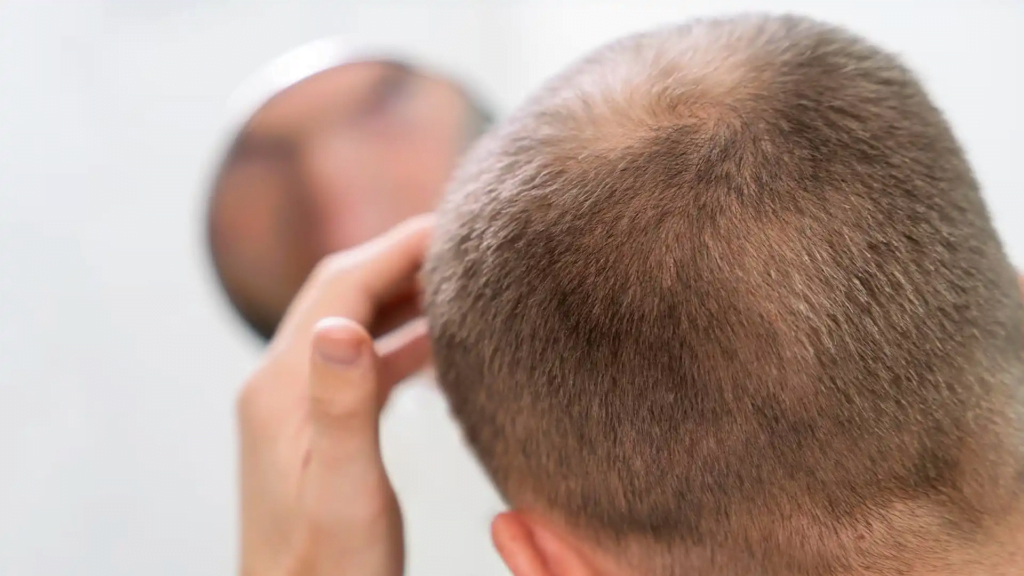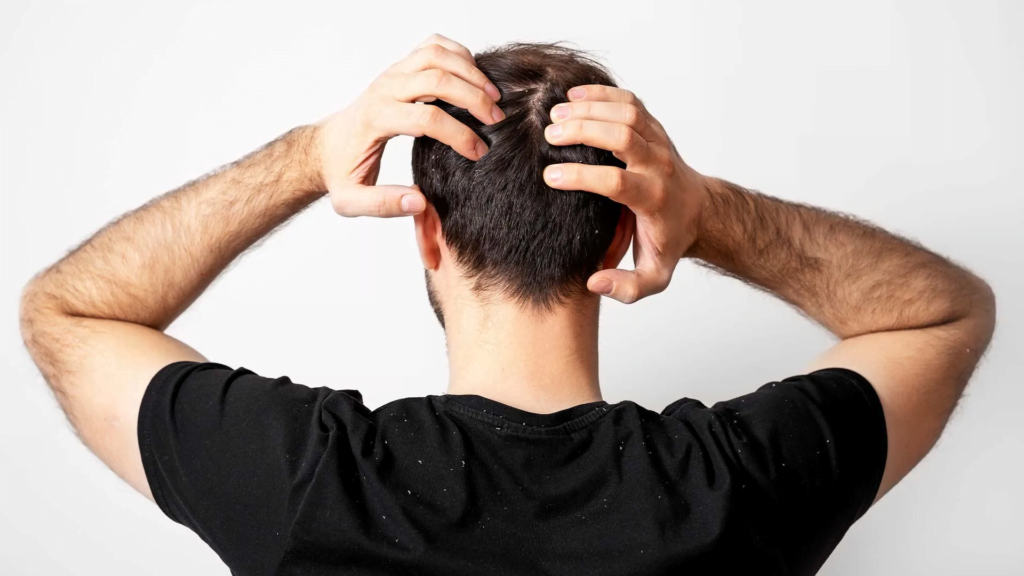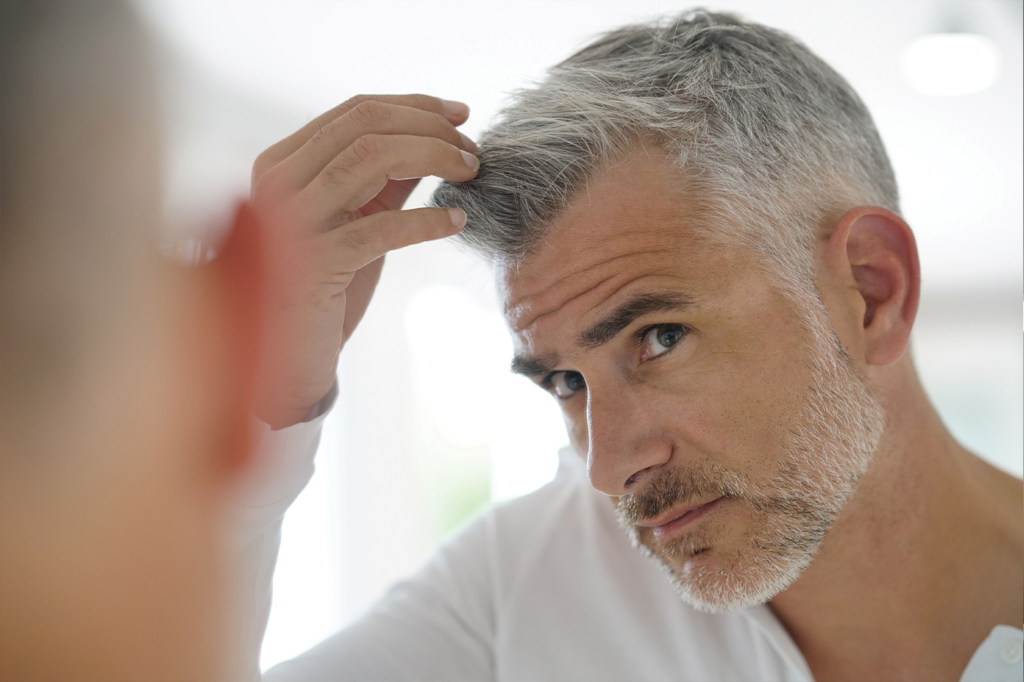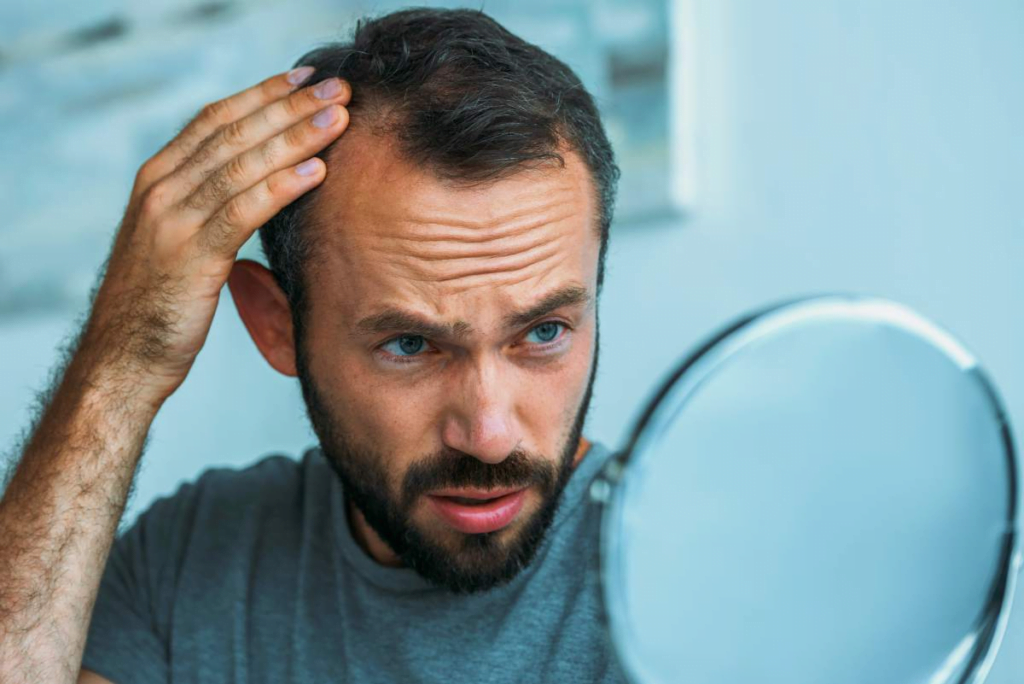What happens 10 years after a hair transplant? Understanding the long-term effects of a hair transplant is crucial for anyone considering this procedure. While the initial results can be transformative, it’s essential to manage expectations and understand what to anticipate after a hair transplant ten years down the line.
İçindekiler
Hair Growth and Density: Expected Fullness and Coverage
The most significant aspect ten years after a hair transplant is the expected fullness and coverage. Ideally, the transplanted hair follicles should remain healthy and continue producing hair throughout your lifetime. This can result in a sustained improvement in hair density and a natural-looking hairline, significantly enhancing your appearance.
However, it’s important to remember that individual results may vary. Factors like the skill of the surgeon, the technique used, and your own hair loss pattern can influence the outcome.

Potential Thinning or Shedding: How Common, and what it may indicate
It’s not uncommon to experience some degree of thinning or shedding in the non-transplanted areas of your scalp after a hair transplant. This is because the underlying cause of hair loss, such as male pattern baldness, is still present. While the transplanted hairs are genetically resistant to the balding hormone, the surrounding hair may continue to miniaturize and eventually fall out.
If you experience thinning or shedding after a hair transplant, it doesn’t necessarily indicate a failed procedure. However, it’s crucial to consult your doctor to assess the situation and determine if additional procedures or medications might be necessary to maintain optimal hair coverage.
The Influence of Ongoing Hair Loss Conditions (if applicable)
The presence of ongoing hair loss conditions can significantly impact the long-term success of your hair transplant. If you have a progressive condition like male pattern baldness, it’s essential to discuss it with your doctor before undergoing a transplant. They can advise you on the potential limitations of the procedure and help you understand how ongoing hair loss might affect your long-term results.
By managing your expectations and understanding the potential outcomes after a hair transplant, you can make an informed decision about whether this procedure is the right choice for you. Remember, consulting with a qualified healthcare professional is essential to discuss your individual situation and achieve the best possible results.
While the focus often lies on hair growth, understanding the long-term effects on the donor area is crucial after a hair transplant. This area is where healthy follicles are extracted for transplantation.
Scarring and Appearance of the Donor Area: Visibility and Healing Progression
One of the primary concerns after a hair transplant is the visibility of scars in the donor area. The good news is that with advancements in techniques like Follicular Unit Extraction (FUE), scarring is typically minimal and often undetectable with short hairstyles. Over the course of ten years, after a hair transplant, these scars typically continue to fade and become even less noticeable.
However, individual healing processes vary. It’s crucial to follow your doctor’s post-operative instructions diligently to optimize healing and minimize scarring.
Scarring Types and their Impact on Appearance
There are two main types of scars that can occur after a hair transplant:
- Linear scars: These are more common with the older Strip Follicular Unit Transplantation (FUT) technique. They appear as thin lines on the scalp and may be more noticeable, especially with shorter hairstyles.
- Follicular unit extraction (FUE) scars: These are tiny, round, white dots left at the extraction sites. They are generally much less noticeable than linear scars and often fade significantly over ten years after a hair transplant.
The impact of scarring on appearance depends on the type, severity, and individual healing. Consulting a qualified surgeon with expertise in scar minimization techniques is crucial to achieving the best possible cosmetic outcome.
Potential Need for Future Touch-up Procedures for the Donor Area
In some cases, after a hair transplant, patients may opt for future touch-up procedures in the donor area. This could involve:
- Scalp micropigmentation: This non-surgical technique camouflages the appearance of scars by depositing pigment into the scalp.
- FUE scar revision: This surgical procedure aims to improve the appearance of existing FUE scars.
The need for such procedures is highly individual and depends on factors like the type and severity of scarring, desired cosmetic outcome, and personal preferences. Discussing these options with your doctor after a hair transplant can help you determine the best course of action for achieving your desired results.
Remember, consulting a qualified healthcare professional is essential to address any concerns you may have after a hair transplant, including those related to the donor area.
While the initial results of a hair transplant can be exciting, maintaining them for the long term requires dedication. Here’s what you need to know about after a hair transplant:
Medications (finasteride, minoxidil) and their role after 10 years
Medications like finasteride and minoxidil can play a crucial role in maintaining your results after a hair transplant. These medications are often used to address the underlying cause of hair loss, such as male pattern baldness.
Finasteride: This medication works by blocking the conversion of testosterone into a form that can contribute to hair loss. Studies suggest its continued use after a hair transplant can help prevent further hair loss in the non-transplanted areas, potentially even promoting growth.
Minoxidil: This topical medication helps stimulate blood flow to the scalp and may promote hair growth. While its effectiveness varies, some individuals find it beneficial to continue using minoxidil after a hair transplant to maintain overall hair health and density.
It’s crucial to remember that these medications are not a one-size-fits-all solution, and their continued use after a hair transplant should be discussed with your doctor. They can assess your individual needs and determine if these medications are appropriate for you.
Lifestyle factors for optimal hair health (diet, stress management, etc.)
Beyond medications, several lifestyle factors can significantly impact hair health after a hair transplant. These include:
- Diet: Maintaining a balanced diet rich in essential nutrients like vitamins, minerals, and protein can support healthy hair growth.
- Stress management: Chronic stress can contribute to hair loss. Techniques like meditation or exercise can help manage stress and potentially benefit overall hair health.
- Scalp care: Following a gentle hair washing routine and avoiding harsh chemicals can promote a healthy scalp environment, which is crucial for hair growth.
By adopting healthy lifestyle practices after a hair transplant, you can create an environment conducive to maintaining optimal hair health and potentially minimizing further hair loss.
Supportive procedures (PRP, etc.) and when to consider them
Platelet-rich plasma (PRP) therapy is a relatively new option gaining popularity after hair transplants. It involves injecting concentrated platelets from your own blood into the scalp. While research on its long-term efficacy is ongoing, some studies suggest it may promote hair growth and improve hair density.
However, it’s important to note that PRP therapy is not a guaranteed solution and should be considered a potential supportive procedure rather than a replacement for established hair loss treatments. Consulting your doctor after a hair transplant can help you determine if PRP or other emerging options might be right for you based on your individual needs and goals.
By combining proper medication use, healthy lifestyle choices, and potential supportive procedures after a hair transplant, you can significantly increase your chances of maintaining your results and enjoying the benefits of your investment for the long term.

A decade after a hair transplant, patients often experience a range of emotions, from satisfaction and renewed confidence to a desire for further refinement. Understanding common experiences and potential next steps can help individuals navigate this period effectively.
Common points of contentment or dissatisfaction a decade later
Contentment: Many patients report lasting satisfaction ten years after a hair transplant. This can be attributed to:
- Improved appearance and self-confidence: A successful transplant can significantly enhance one’s appearance, leading to increased self-confidence and a more positive self-image.
- Natural-looking results: Advancements in techniques like FUE can achieve natural-looking hairlines and density, contributing to long-term satisfaction.
- Low-maintenance solution: Transplanted hair typically requires minimal additional care compared to ongoing hair loss treatments.
Dissatisfaction: While many experience lasting benefits, some individuals might encounter aspects of dissatisfaction ten years after a hair transplant:
- Ongoing hair loss in non-transplanted areas: The underlying cause of hair loss may continue to affect non-transplanted areas, requiring additional medical or surgical interventions.
- Changes in hair texture or density: Over time, natural aging processes can affect the texture and density of both transplanted and native hair.
- Shifting aesthetic preferences: Personal preferences regarding hair styles and hairline design may evolve over a decade, leading to a desire for adjustments.
When a revision transplant may be considered
Revision transplants may be considered after a hair transplant for various reasons:
- Addressing areas of initial dissatisfaction: If the initial transplant results did not meet expectations, a revision procedure can address concerns like patchiness or unnatural hairlines.
- Correcting donor area scarring: In some cases, individuals may seek revision surgery to minimize the appearance of scars in the donor area.
- Addressing ongoing hair loss: If hair loss continues in non-transplanted areas, a strategic revision transplant can help maintain overall hair coverage and density.
It’s crucial to remember that revision transplants are not always necessary or advisable. Consulting a qualified hair transplant surgeon after a hair transplant is essential to assess individual needs, discuss realistic expectations, and determine if a revision procedure is the best course of action.
Evolving expectations over time
Hair transplant expectations naturally evolve after a hair transplant. While the initial focus may be on achieving a specific aesthetic outcome, the long-term perspective should shift towards managing ongoing hair loss and maintaining healthy hair growth.
By understanding the potential for both satisfaction and ongoing considerations after a hair transplant, individuals can make informed decisions about their hair journey and approach the next decade with realistic expectations and a proactive approach.

Conclusion
A decade after a hair transplant, individuals can expect a range of potential outcomes. While many experience lasting satisfaction, improved self-confidence, and low-maintenance hair, others might encounter ongoing hair loss, changes in hair characteristics, or evolving aesthetic preferences.
Understanding these possibilities and the potential need for revision procedures or lifestyle adjustments is crucial for managing expectations and maintaining optimal results in the long term. Ultimately, consulting a qualified healthcare professional before and after a hair transplant is essential to navigate this process effectively and achieve the best possible outcome for your individual needs and goals.
Hairtrans.com was founded by world-famous plastic surgeon Dr. MFO, who is an expert in facial feminization or facial masculinization surgeries, and is managed under his leadership. Would you like to have a hair transplant under the coordination of a plastic surgeon with many years of experience?
Whether you are a trans woman or a natural born male or female, if you are looking for the best hair transplant, contact us now.


